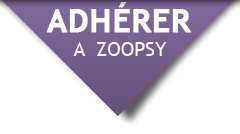7th International Veterinary Behaviour Meeting - IVBM,
15th Annual Meeting of the ESVCE ,
6th Annual Meeting of the ECVBM-CA,
CABTSG - Annual Congress - Edimbourg (UK) - 29 au 31 octobre 2009
Call for papers
From 29th to 31st October 2009, ESVCE, ECVBM and CABTSG will have a joint IVBM meeting in Edinburgh, UK
Topics: Veterinary Clinical Ethology at large
ESVCE especially asks for papers concerning: "aspects of a relationship - human-animal bonding and its problems"
Abstract submission details are detailed below
Abstracts should be sent to this address
All abstract that do not follow presentation guidelines will be rejected.
Deadline for submitting abstracts: 1 May 2009

Guidelines for abstract submission for ESVCE conferences
Abstracts based on completed research (qualitative or quantitative) or critical review are welcome. There will be three categories of abstract submission.
- Long spoken presentations (35 minutes plus 10) – these should be data based, original scientific research
- Short spoken presentations (15 minutes plus 5) – these may be case reports, treatment regimes, data based or other material
- Poster presentations – these may be case reports, treatment regimes, data based or other material
The abstract must be in English, can be no longer than 300 words and should be concise, informative and explicit. Providing a list of topics to be covered, or using statements such as “results will be discussed” or “a new theory will be developed” is not appropriate.
Research abstracts must include the following components:
- an introduction (a few sentences introducing the study and its objectives)
- methodology – including a description of the participants (both human and animal), such as number (n), type, age, gender, and species, and a description of the study design, data collection, data analysis and apparatus used
- main results, including, when appropriate, statistical test, significance level and actual test value (e.g., F(df) = ?, p < 0.05)
- principal conclusions and implications for the field
Critical review abstracts must include the following components:
- an introduction (a clear statement of the purpose of the review)
- key literature references to theory, concepts, evidence or methodology that have been reviewed or re-evaluated
- main findings
- principal conclusions and implications for the field
All submissions will be reviewed anonymously by at least four (4) independent referees, according to the pre-set criteria including: abstracts having the components required (as listed above), the quality of each component, overall clarity of the abstract, and importance of the research to the field.
Abstract formatting instructions
1. All abstracts must be typed, single-line spaced and must fit on one page.
2. Font size should be Times New Roman 12 throughout
3. First line: indicate intention in capital letters – LONG OR SHORT SPOKEN PRESENTATION OR POSTER.
4. Second line: descriptive, concise, meaningful title – in bold.
5. Third line: names of all authors. Underline the presenting author.
6. Fourth line: addresses of authors (institution, city, country) and e-mail address of presenting author.
7. Then leave two blank lines.
8. On the next line, the text of the abstract – no longer than 300 words.
9. Do not indent for paragraphs but leave a one-line gap between paragraphs.
10. When using uncommon abbreviations, spell out in full when first mentioned, followed by the abbreviation in parentheses. Do not abbreviate in the title of the abstract.
11. Tables are not permitted in the abstract.
12. For critical reviews, key references (if appropriate) should be listed in abbreviated form, e.g., Dutton, D. and Williams, C. 2004. Anthrozoös 17(1): 210–224.
Abstracts may be posted or submitted electronically (MS Word attachment). Two copies of the abstract must be submitted, one with the authors’ names and affiliations removed.
A maximum of two (2) abstracts may be accepted from each presenting (or first) author (e.g., 1 spoken and 1 poster presentation, or 2 posters). Unattended posters are not allowed, although a presenting author may delegate someone else to present a poster on their behalf, if they cannot attend in person.
No more than 25% of the papers in the program should be from one research group
Presentation Guidelines.
Poster print-outs. We offer you the opportunity to bring print-outs of your posters with you to the congress, in case you wish to give interested delegates the possibility to get to know your study in more detail. Prints can not be copied on site, so we recommend that you bring approximately 50 copies with you. Also bring a plastic folder to attach the print-outs to your poster stand.
Guidelines for oral presentations.
Duration of presentations:
Plenary presentations will be 35 min + 10 min discussion;
Short oral presentations will be 15 min + 5 min discussion
The time schedule will be followed strictly.
All presentations should be done in Powerpoint or Adobe acrobat (pdf).
The lecture room will be equipped with laptop computers. PowerPoint presentations must be prepared on a Windows PC. Please bring your file on diskette, USB-flash-memory-drive, CD or DVD. You can not connect your laptop to the beamer in order to give your presentation without consulting the congress staff. We can not guarantee compatibility of personal laptops with our projection equipment.
If you want to use video film incorporated in your PowerPoint presentation, please check these in the lecture rooms prior to your presentation (talk to our staff about when/how to do this). As video clips can be problematic, please think on the need to show it. We also suggest you consider the use of other visual and sound effects in your presentation carefully, in order to avoid technical problems.
Computer files has to be downloaded to congress PC. In order to avoid last minute problems, people with oral presentations have to personalize at 19:00 - 20:00 on the previous day at the speakers-room.
Guidelines for posters.
Posters must not exceed 90 cm (width) x 120cm (height).
Poster presenters must be at their posters for questions and discussion during the sessions noted on the program
If you come by airplane, carry your slides, USB hard-disk, USB memory stick, CD-Rom, manuscript, poster, etc. as hand luggage if possible, in case your luggage is delayed.
|


